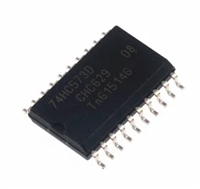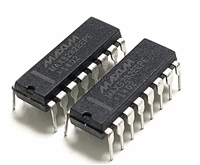CY8CTMA120
Figure 4. User Module/Source Code Development Flows
Device Editor
Designing with User Modules
The development process for the PSoC device differs from that
of a traditional fixed function microprocessor. The configurable
analog and digital hardware blocks give the PSoC architecture a
unique flexibility. It pays dividends in managing specification
change during development and by lowering inventory costs.
These configurable resources, called PSoC blocks, have the
ability to implement a wide variety of user-selectable functions.
Each block has several registers that determine its function and
connectivity to other blocks, multiplexers, buses and to the IO
pins. Iterative development cycles permit you to adapt the
hardware and the software. This substantially lowers the risk of
having to select a different part to meet the final design require-
ments.
Placement
User
Module
Selection
Source
Code
Generator
and
Parameter
-ization
Generate
Application
Application Editor
To speed the development process, the PSoC Designer IDE
provides a library of pre-built, pre-tested hardware peripheral
functions, called “User Modules.” User modules make selecting
and implementing peripheral devices simple, and come in
analog, digital, and mixed signal varieties. The standard user
module library contains over 50 common peripherals such as
ADCs, DACs timers, counters, UARTs, and other not so common
peripherals such as DTMF generators and Bi-Quad analog filter
sections.
Source
Code
Editor
Project
Manager
Build
Manager
Build
All
Debugger
Each user module establishes the basic register settings that
implement the selected function. It also provides parameters that
allows to tailor its precise configuration to a particular application.
For example, a Pulse Width Modulator User Module configures
one or more digital PSoC blocks, one for each 8 bits of resolution.
The user module parameters permit to establish the pulse width
and duty cycle. User modules also provide tested software to cut
development time. The user module application programming
interface (API) provides high level functions to control and
respond to hardware events at run time. The API also provides
optional interrupt service routines that are adapted as needed.
Event &
Breakpoint
Manager
Interface
to ICE
Storage
Inspector
The next step is to write the main program and any sub-routines
using PSoC Designer’s Application Editor subsystem. The Appli-
cation Editor includes a Project Manager that allows to open the
project source code files (including all generated code files) from
a hierarchal view. The source code editor provides syntax
coloring and advanced edit features for both C and assembly
language. File search capabilities include simple string searches
and recursive “grep-style” patterns. A single mouse click invokes
the Build Manager. It employs a professional-strength “makefile”
system to automatically analyze all file dependencies and run the
compiler and assembler as necessary. Project level options
control optimization strategies used by the compiler and linker.
Syntax errors are displayed in a console window. Double click
the error message to view the offending line of source code.
When all is correct, the linker builds a HEX file image suitable for
programming.
The API functions are documented in user module data sheets
that are viewed directly in the PSoC Designer IDE. These data
sheets explain the internal operation of the user module and
provide performance specifications. Each data sheet describes
the use of each user module parameter and documents the
setting of each register controlled by the user module.
The development process starts when you open a new project
and bring up the Device Editor, a graphical user interface (GUI)
for configuring the hardware. Pick the user modules you need for
your project and map them onto the PSoC blocks with
point-and-click simplicity. Next, build signal chains by intercon-
necting user modules to each other and the IO pins. At this stage,
also configure the clock source connections and enter parameter
values directly or by selecting values from drop down menus.
When you are ready to test the hardware configuration or move
on to developing code for the project, perform the “Generate
Application” step. This causes PSoC Designer to generate
source code that automatically configures the device to your
specification and provides the high level user module API
functions.
The last step in the development process takes place inside the
PSoC Designer’s Debugger subsystem. The Debugger
downloads the HEX image to the ICE where it runs at full speed.
Debugger capabilities rival those of systems costing many times
more. In addition to traditional single-step, run-to-breakpoint,
and watch-variable features, the Debugger provides a large
trace buffer and allows you define complex breakpoint events
such as monitoring address and data bus values, memory
locations, and external signals.
Document Number: 001-46901 Rev. *C
Page 6 of 35
[+] Feedback






 深入解析AD7606高性能多通道模数转换器:资料手册参数分析
深入解析AD7606高性能多通道模数转换器:资料手册参数分析

 74HC573三态非易失锁存器(Latch)资料手册参数分析
74HC573三态非易失锁存器(Latch)资料手册参数分析

 MAX3232 RS-232电平转换器资料手册参数分析
MAX3232 RS-232电平转换器资料手册参数分析

 MAX485 RS-485/RS-422收发器资料手册参数分析
MAX485 RS-485/RS-422收发器资料手册参数分析
